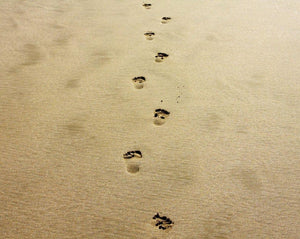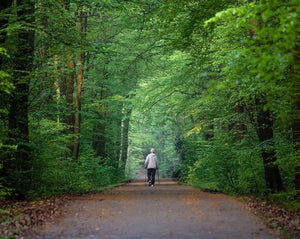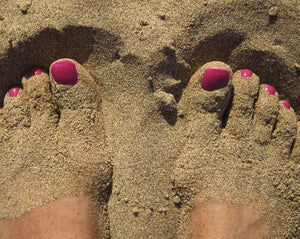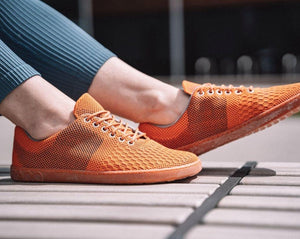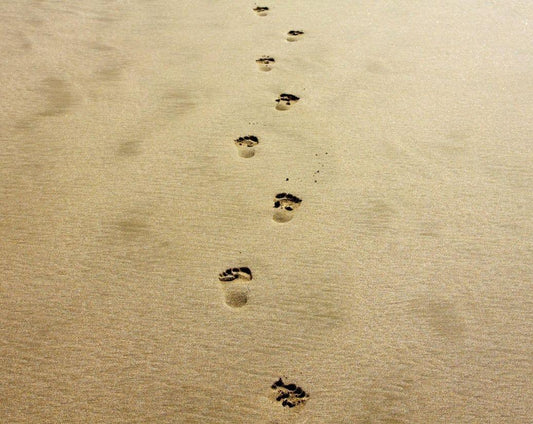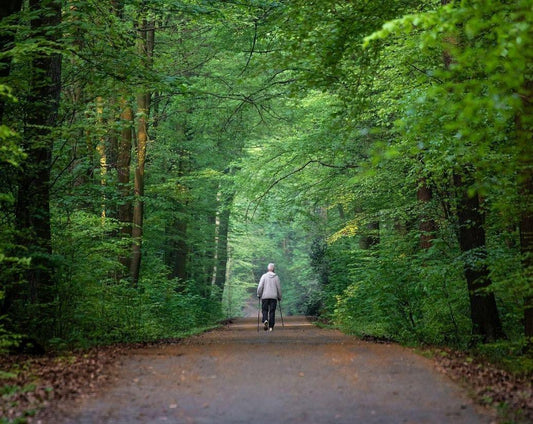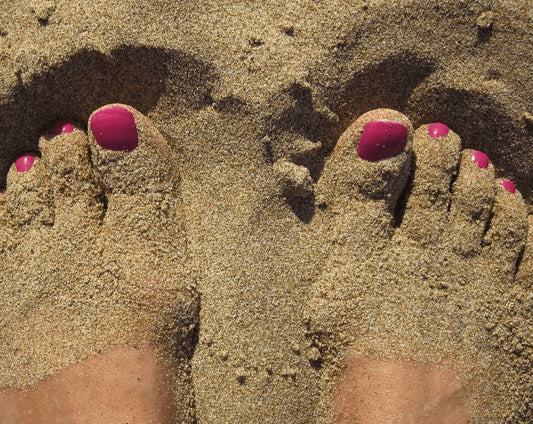Why it is worth training barefoot or with barefoot shoes
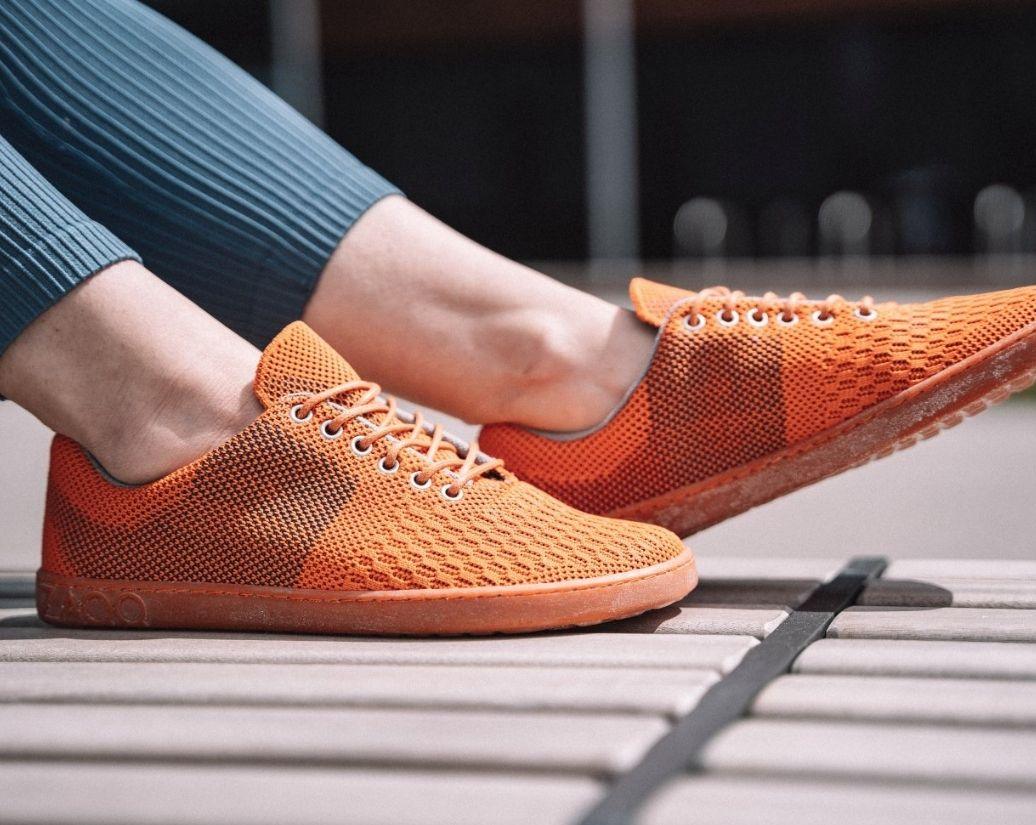
We jump out of bed and slip into our slippers, before leaving the house we put on our street shoes. Walking barefoot? Out of the question, because our feet are so accustomed to footwear that it can be quite uncomfortable to walk barefoot. The tiled floor is too cold for walking barefoot and on the street we need shoes to protect our feet.
Bare feet are also generally considered unattractive and inelegant. Shoes are simply part of our modern lifestyle. Besides the protective function, we can also express our individual style with shoes.
However, by wearing shoes we also lose muscle strength and the sensory feedback from the ground is lost. Why it can be beneficial to train barefoot, you will learn in the following article.
Training Barefoot – Benefits / Effects
In a study by Franklin et al. 2015, published in the scientific journal Gait & Posture, interesting results can be read.
The following effects can be achieved when shoes are taken off during training, i.e., when training barefoot or with socks:
-
More muscles are engaged
In normal footwear, our foot moves in a kind of protective posture. Barefoot, up to 20 more muscles are engaged, which not only get strengthened but also have a variety of tasks for a stable gait. Training these muscles specifically with weights can quickly reactivate and build the "forgotten" muscles. This makes an important contribution to staying healthy, fit, and injury-free.
-
Better balance
Having a good sense of balance is important to prevent injuries. As we age, a fall can lead to serious injuries, which is why it is particularly important to always walk stably and not to wobble, even if the surface is slippery or uneven.
A study on children by Zech et al. 2018, published in Frontiers in Pediatrics, shows that children who walk and play barefoot a lot have a significantly better sense of balance than children who always wear shoes.
-
Gain in muscle tone and muscle strength
Especially in weight training, whether with bodyweight or external weights, a great effect can be felt when training barefoot instead of with shoes.
The brain receives better sensory feedback from the ground through the feet. Especially with stagnating performances, barefoot training can lead to being able to lift heavier weights. The better sensation through the foot can significantly improve the quality of movements, which can ultimately lead to an increase in performance.

Is barefoot training suitable for everyone?
In principle, yes, provided you have healthy feet. Anyone who has had fractures or misalignments, or suffers from osteoporosis, should always consult with their treating doctor. Furthermore, you should always listen to your own body. If you experience pain, you should not continue barefoot training.
Additionally, it should be noted that outdoor training poses a particular risk of injury from shards, thorns, or sharp stones.
Tips for Barefoot Training
As with all new activities and sports, you should also gradually get used to the load when barefoot training. Those who are already accustomed to doing weight training in shoes should not train barefoot for more than 10 minutes initially. The same naturally applies to all other sports.
It is best to follow the rule of thumb to extend barefoot training by 5 minutes each week, as long as the previous session did not cause any problems. This cautious increase may seem overly careful, but it must be considered that the newly stressed muscles need time to build. Only when strong muscles are developed in the foot area does the risk of injury decrease.
Therefore, it is always advisable to slowly ease into barefoot training and not to overdo it.

An Alternative to Barefoot Training Are Barefoot Shoes
An alternative to barefoot training is wearing barefoot shoes. Our ZAQQ barefoot shoes offer sufficient protection but are designed so that the sensory feedback is not lost. Therefore, the soles of all ZAQQs are absolutely flat, ultra-thin, and highly flexible. The foot can feel the ground and roll naturally. Additionally, our shoes offer a lot of space in the toe area, allowing the foot to move freely as if running barefoot in the barefoot shoe.
For athletic activities, whether weight or running training, we recommend our ZAQQ barefoot shoes from the Running category. These are lightweight, flexible, and particularly breathable.
>> Running Barefoot Shoes for Women – Click Here! <<
>> Running Barefoot Shoes for Men – Click Here! <<
Feel free, feel ZAQQ.
Sources:
Simon Franklin, Michael J. Grey, Nicola Heneghan, Laura Bowen, François-Xavier Li 2015: Barefoot vs common footwear: A systematic review of the kinematic, kinetic and muscle activity differences during walking, Gait & Posture, 2015, Volume 42, Issue 3, p 230-239.
http://www.sciencedirect.com/science/article/pii/S0966636215004993
Astrid Zech, Ranel Venter, Johanna E. de Villiers, Susanne Sehner, Karl Wegscheider, Karsten Hollander 2018: Motor skills of children and adolescents are influenced by growing up barefoot or shod, Frontiers in Pediatrics, 2018, Volume 6, p 115.
https://www.frontiersin.org/articles/10.3389/fped.2018.00115/full

